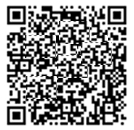[1] 康万里, 李恬静, 王赛赛, 等. 全国活动性肺结核报告发病率变动趋势及预测研究[J]. 中国防痨杂志, 2022, 44(7): 681-684.
[2] 牛亚燕, 时翠林, 曾令武, 等. 结核病合并糖尿病的研究进展[J]. 国际流行病学传染病学杂志, 2021, 48(6): 479-483.
[3] 陈红光, 刘民, 顾芳慧. 中国大陆地区肺结核合并糖尿病患病率的Meta分析[J]. 中华流行病学杂志, 2013, 34(11):1128-1133.
[4] 迪娜•木拉力, 巴合提别克•托合塔尔拜克. 肺结核合并糖尿病患者临床特征及转归影响因素分析[J]. 医学研究杂志, 2024, 53(2): 101-105.
[5] PENG YF.Pulmonary tuberculosis and diabetes mellitus: Epidemiology, pathogenesis and therapeutic management (Review)[J]. Med Int (Lond), 2024, 4(1): 4.
[6] BOADU AA, YEBOAH-MANU M, OSEI-WUSU S, et al.Tuberculosis and diabetes mellitus: The complexity of the comorbid interactions[J]. Int J Infect Dis, 2024, 146: 107140.
[7] SHAUKAT SN, EUGENIN E, NASIR F, et al.Identification of immune biomarkers in recent active pulmonary tuberculosis[J]. Sci Rep, 2023, 13(1): 11481.
[8] 江佳艳, 肖筱, 李志鹏, 等. 早期炎症细胞因子对肺结核患者预后的预测作用[J]. 复旦学报:医学版, 2022, 49(2): 189-193,200.
[9] RING S, EGGERS L, BEHRENDS J, et al.Blocking IL-10 receptor signaling ameliorates Mycobacterium tuberculosis infection during influenza-induced exacerbation[J]. JCI insight, 2019, 5(10): e126533.
[10] WEI Z, CHEN Y, DONG P, et al.CXCL9/CXCL10 as biomarkers the monitoring of treatment responses in Pulmonary TB patients: a systematic review and meta-analysis[J]. BMC Infect Dis, 2024, 24(1): 1037.
[11] 中华医学会, 中华医学会杂志社, 中华医学会全科医学分会, 等. 肺结核基层诊疗指南(2018年)[J]. 中华全科医师杂志, 2019, 18(8): 709-717.
[12] 中华医学会糖尿病学分会. 中国2型糖尿病防治指南(2017年版)[J]. 中华糖尿病杂志, 2018, 10(1): 4-67.
[13] 王兴斌, 赵昌明, 黄秋丽, 等. 白细胞介素与肺结核因果关联的孟德尔随机化研究[J]. 中华疾病控制杂志, 2024, 28(7): 827-832, 855.
[14] 符婷, 黄丽菊, 杨进军, 等. 肺结核患者血清IL-18、IL-23、IFN-γ及MCP-1水平变化及其与病情严重程度的相关性[J]. 中国免疫学杂志, 2022, 38(7): 859-863.
[15] 李福利, 刘捷凌, 冷霞, 等. MAIT细胞及其分泌因子表达与肺结核病情严重程度的关系[J]. 分子诊断与治疗杂志, 2021, 13(9): 1482-1485.
[16] 徐欣轶, 沈春丽, 王丽君, 等. 活动性肺结核患者血清中移动抑制因子、干扰素γ和肿瘤坏死因子-α水平变化及预后关系研究[J]. 临床和实验医学杂志, 2021, 20(7): 722-775.
[17] KIREEV FD, LOPATNIKOVA JA, LAUSHKINA ZA, et al.Autoantibodies to Tumor Necrosis Factor in Patients with Active Pulmonary Tuberculosis[J]. Front Biosci (Landmark Ed), 2022, 27(4): 133.
[18] RAJAMANICKAM A, KOTHANDARAMAN SP, KUMAR NP, et al.Cytokine and chemokine profiles in pulmonary tuberculosis with pre-diabetes[J]. Front Immunol, 2024, 15: 1447161.
[19] KRIVOŠOVÁ M, DOHÁL M, MÄSIAROVÁ S, et al. Exploring cytokine dynamics in tuberculosis: A comparative analysis of patients and controls with insights from three-week antituberculosis intervention[J]. PloS One, 2024, 19(8): e0305158.
[20] LOSADA PX, PERDOMO-CELIS F, CASTRO M, et al.Locally-secreted interleukin-6 is related with radiological severity in smear-negative pulmonary tuberculosis[J]. Cytokine, 2020, 127: 154950.
[21] 陈俊, 袁保东, 彭孝红, 等. 气管支气管结核患者治疗前后支气管灌洗液中TNF-α、IFN-γ、IL-6水平观察[J]. 山东医药, 2018, 58(40): 51-54.
[22] IZUMIDA M, JOBE H, COKER EG, et al.HBHA induces IL-10 from CD4+ T cells in patients with active tuberculosis but IFN-γ and IL-17 from individuals with Mycobacterium tuberculosis infection[J]. Front Immunol, 2024, 15: 1422700.
[23] WANG Y, SUN Q, ZHANG Y, et al.Systemic immune dysregulation in severe tuberculosis patients revealed by a single-cell transcriptome atlas[J]. J Infect, 2023, 86(5): 421-438.
[24] ZHOU C, GAO Y, DING P, et al.The role of CXCL family members in different diseases[J]. Cell Death Discov, 2023, 9(1): 212.
[25] CHENG Y, MA XL, WEI YQ, et al.Potential roles and targeted therapy of the CXCLs/CXCR2 axis in cancer and inflammatory diseases[J]. Biochim Biophys Acta Rev Cancer, 2019, 1871(2): 289-312.
[26] RAZBEK J, DAKEN M, CHEN Y, et al.Association Studies of Serum Levels of TNF-α, IL-10, IFN-γ and CXCL 5 with Latent Tuberculosis Infection in Close Contacts[J]. Infect Drug Resist, 2024, 17: 899-910.
[27] SELVAVINAYAGAM ST, ASWATHY B, YONG YK, et al.Plasma CXCL8 and MCP-1 as biomarkers of latent tuberculosis infection[J]. medRxiv, 2023, 3(11):e0002327.
[28] SELVAVINAYAGAM ST, ASWATHY B, YONG YK, et al.Plasma CXCL8 and MCP-1 as surrogate plasma biomarkers of latent tuberculosis infection among household contacts-A cross-sectional stud[J]. PLOS Glob Public Health, 2023, 3(11): e0002327.
[29] ALI ZA, MANKHI AA, AD'HIAH AH. Significance of the chemokine CXCL10 and human beta-defensin-3 as biomarkers of pulmonary tuberculosis[J]. Tuberculosis (Edinb), 2021, 128: 102078.
[30] FAN J, YANG Y, WANG L, et al.Study on the Correlation between Interleukin-27 and CXCL10 in Pulmonary Tuberculosis[J]. J Immunol Res, 2022, 2022: 2932837.
[31] 苏瑾文, 刘艳华, 杨秉芬, 等. 趋化因子在重症继发性肺结核患者表达研究[J]. 中国热带医学, 2015, 15(4): 415-418,429.
[32] ZHANG B, LI H, ZHANG J, et al.Activating transcription factor 3 protects alveolar epithelial type II cells from Mycobacterium tuberculosis infection-induced inflammation[J]. Tuberculosis (Edinb), 2022, 135: 102227. |



